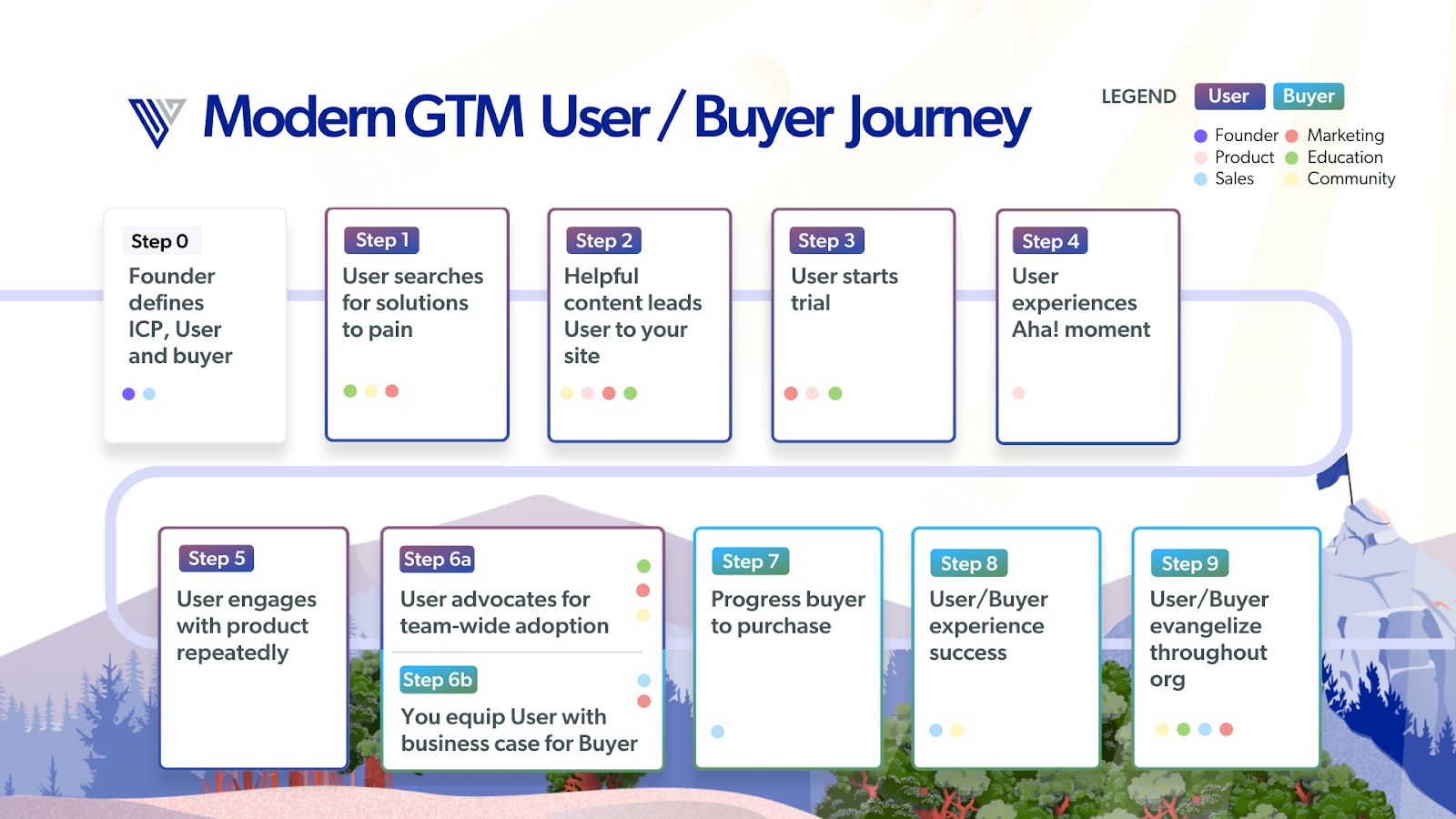
A self-serve PLG experience allows users to sign up, try the product, and gain value from it without requiring onboarding or interaction from the company’s sales or customer success team.
Most advice about building a good self-serve software experience focuses on companies at scale that can employ dedicated growth teams to reduce user friction. But what do you do as an early-stage founder with a small team? This article offers a strategic framework you can leverage to build your product’s self-serve experience for users to try before they buy.
In a product-led growth (PLG) motion, users must be able to try the product on their own in one of these ways:
• An always-free plan with limited usage
• An open-source version for developer tools
• A limited-time free trial leading to a paid plan
.png)
All three methods share one thing in common: they must be self-serve product experiences. “User activation” is the primary goal of a self-serve PLG motion and it should happen before users talk to a salesperson
The short answer is not on day zero. Let’s assume you’ve successfully completed your alpha product phase with your design partners and have decided on a PLG strategy. It’s critical even for enterprise startups embracing product-led growth to go through a private beta phase with 20 to 30 customers where they qualify and carefully onboard every new team. This phase offers valuable insight that will feed messaging, product, and the customer success roadmap. The self-serve experience should be built during this private beta phase based on learnings from onboarding and only launched publicly after receiving feedback from early adopters.
The private beta phase should also include dark launches, where you are testing your messaging, sign-up flow, and early versions of your self-serve experience. You can target a small audience using Twitter/LinkedIn ads, for instance, in preparation for your public launch.
Here’s a summary of the three early phases of product development along with a recommended timeline and activities for each phase.
.png)
The short answer: not a lot. However, the concept of self-serve is a spectrum, not a hard line in the sand. The work involved for customers to try a product can range from hardly anything (think Calendly) to watching video tutorials (Webflow) or perhaps asking your friendly colleague in engineering/IT for a few minutes of help (Zoom).
If self-serve is a spectrum, how do you know if your product is self-serve enough? In other words, when can you stop building and launch that free plan or trial? This is what we’ll help answer next.
Great products begin with a strong value proposition and build on it over time, creating increasing ROI for their customers with every use. The key to a great self-serve product experience lies in demonstrating one strong value proposition early. Based on our extensive research, here’s a simple framework that founders can use to decide whether their product meets the bar. In essence, your self-serve experience needs a 5-minute “time to aha”.
We refer to the “aha moment” here as the period in which the product demonstrates its first differentiated value proposition. This is not to be confused with small moments of delight and learning in general. In fact, you will need many of those delightful moments to continue motivating your users to invest toward reaching their “aha!” and beyond. For instance, if you are new to Webflow, your first big ‘aha!’ moment could be simply picking a great template for your blog within five minutes of setting up an account.
Note that the nature of the ‘aha!’ experience needn’t necessarily include a full implementation of your product. The aha moment could be anything from a realistic sandbox to a pre-filled template or a partial implementation that mimics your product.
This ‘aha!’ moment is also not the same as a fully activated customer or account. For an enterprise product, activation requires continued investment in the self-serve experience from more than one user on a team. However, it is a good measure for individual user activation. This transition occurs across steps 4, 5, and 6a of the Modern GTM journey — starting with an individual user getting activated (‘aha!’ moment) in 4, to a team adopting the product in 6a.

There are three primary reasons founders struggle to ship self-serve experiences that have a 5-minute TTA:
If your product has any of these three barriers, you need to invest in creating a self-serve product that will circumvent them. Without explicitly circumventing these requirements in your self-serve experience, your product will not see high adoption in a free plan/trial.
Our next article focuses on the tactics to reduce these barriers and build a bridge for your users to the “aha!” moment. We also discuss which tactics suit the three modes of PLG the best.